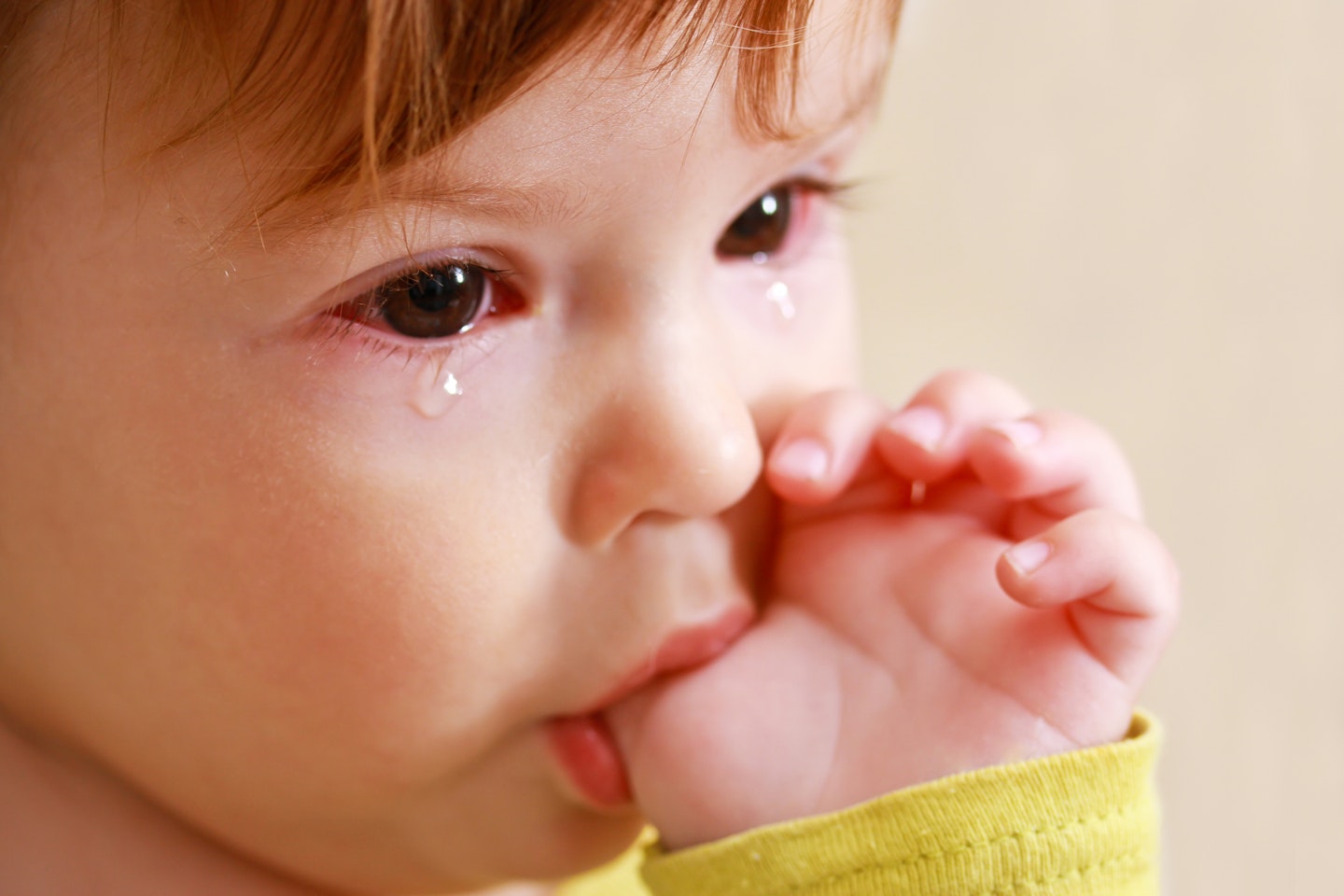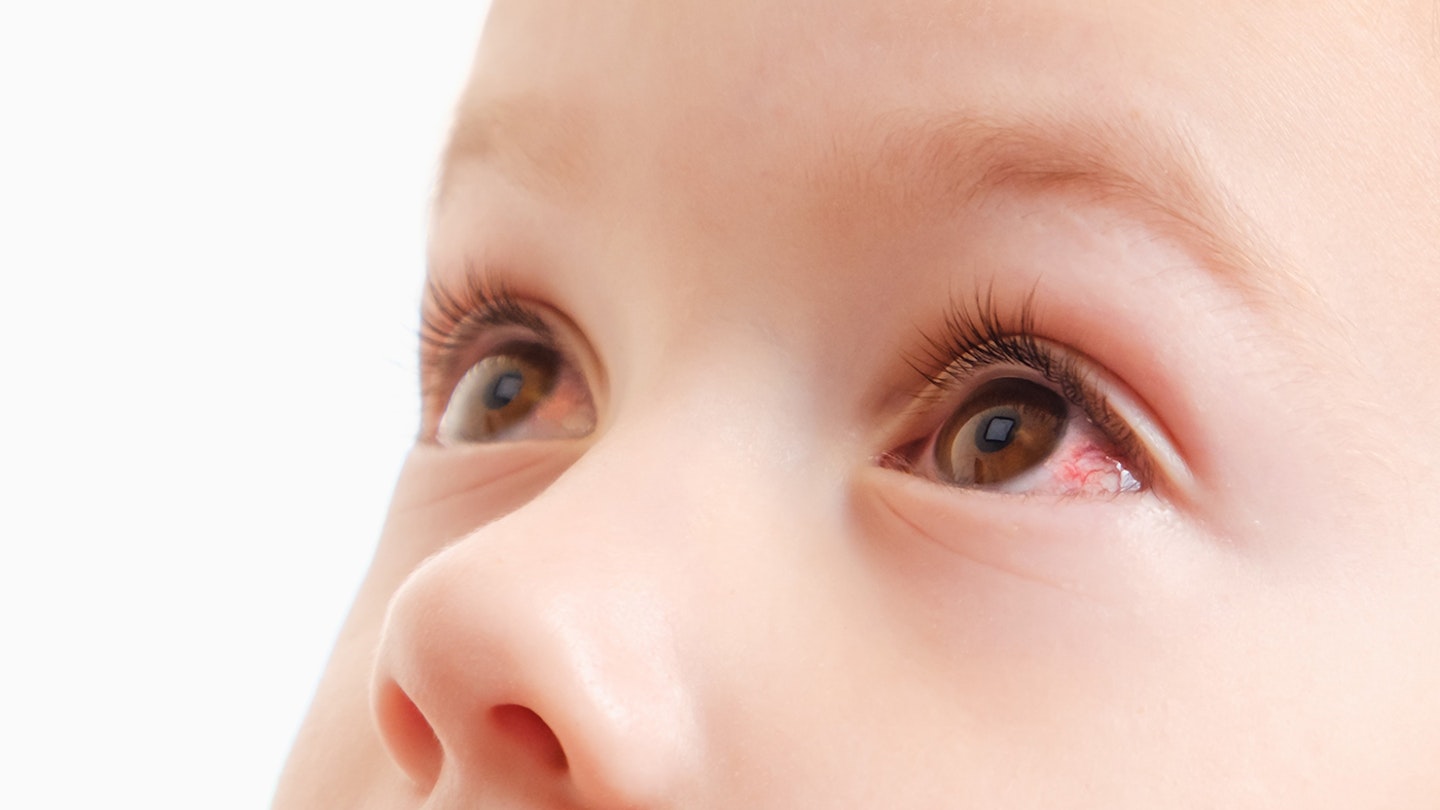Conjunctivitis in toddlers, kids and babies can be common and may naturally cause you to worry. We spoke to Mr Saurabh Jain, Consultant Ophthalmic Surgeon at The Portland Hospital (part of HCA Healthcare UK) to find out what symptoms to look out for, the causes of conjunctivitis and when to seek medical attention.
What is conjunctivitis?
Conjunctivitis is a common condition that typically causes inflammation and redness of the conjunctiva, the thin layer of tissue that lies over the inner surface of the eyelid. Conjunctivitis can affect one or both eyes, with the blood vessels in the conjunctiva becoming inflamed, resulting in a red or pink colour to the eyes. Conjunctivitis usually occurs in children, and is highly contagious, with large outbreaks often happening in nurseries and schools.
What are the symptoms of conjunctivitis in toddlers?

Symptoms of conjunctivitis usually develop within 24 to 72 hours after becoming infected, lasting from two days to three weeks depending on the severity of the infection. Symptoms can occur differently in each toddler and some of them can be mistaken for other health conditions, such as allergies, keratitis, or blepharitis.
The most common visible signs of conjunctivitis include:
• Redness of the eyes or showing a pink colour
• Swelling of the eyelids and a yellow-green or watery discharge from the eyes
• Your toddler complaining of itchy, irritated eyes that feels gritty like sand, or a burning sensation. (a telling sign of this is if your toddler is rubbing their eyes a lot)
• Eyelids may also appear stuck together in the morning, with lesions that are crusty to touch
What causes conjunctivitis in toddlers?
There are two types of conjunctivitis: infectious conjunctivitis and allergic conjunctivitis. Both result in similar symptoms but are caused differently.
Infectious conjunctivitis is highly contagious and caused by an infection that is either viral or bacterial, which are similarly responsible for colds, ear infections, or sinus infections. Bacterial conjunctivitis is associated with a sticky discharge while viral conjunctivitis has a watery discharge with associated sore throat or cold like symptoms.
"Symptoms of conjunctivitis usually last 24 to 72 hours after becoming infected"
Toddlers tend to become infected with this strain of conjunctivitis if they’ve been in contact with another child or adult who is infected. This is usually spread through particles discharged from an infected person coughing, sneezing, or touching the child. Close contact with contaminated surfaces or objects, such as swimming towels, pillowcases, tissues, or infected water can spread the infection quickly too.
Allergic conjunctivitis is not contagious and is more commonly found in toddlers that have a previous history of other allergies or suffer from asthma, hayefever or eczema. Signs of allergic conjunctivitis, in addition to the itchy and watery eyes, are a runny nose and sneezing.
What should I do if my toddler has conjunctivitis?
If your toddler’s symptoms seem mild, they tend to usually go away on their own without treatment. However, there are some at-home treatments that can help alleviate discomfort from the infection. One way of easing itchiness and irritation is to boil water and let it cool before soaking a cotton ball and gently wiping each eye from inside to out. It is imperative that you use different cotton balls for each eye to prevent spreading the infection between eyes. Also refrain from touching the inside of the eye where the infection is as this may cause additional damage to the conjunctiva.
For those toddlers who are experiencing conjunctivitis because of allergies, antihistamines can provide relief from the symptoms. However, it is important to discuss antihistamine use for your toddler with a GP or pharmacist before prescribing them to your child.
To help combat the spread of the infection further, wash your hands frequently with antibacterial soap and hot water. Prevent your toddler touching their eyes where possible and have your toddler wash their hands often too. They should also avoid sharing items with other people, such as towels, pillowcases or toys.
Children should stay away from school or nursery until the discharge from the eyes have cleared. They can then return unless they are still feeling unwell or have a fever.
When should I call my GP?
If your toddler’s conjunctivitis is still causing pain and discomfort after a few days since symptoms started, you should seek medical advice from a GP or paediatrician. If your toddler develops severe pain, increased swelling of the eye or a persistent white spot in the cornea, it is essential to call a paediatrician immediately. Other more severe signs to monitor for are problems with their eyesight, a rising fever or remaining generally unwell.
In most instances, a doctor will determine the strain of conjunctivitis and recommend an antibiotic treatment, most commonly in the form of antibiotic drops, or other treatment options depending on the severity of the case.
Meet the expert
Mr. Saurabh Jain is a Consultant Ophthalmic Surgeon and Clinical Director of services at the Royal Free London NHS Foundation Trust.
As a leading eye specialist in London, his private practice is based mainly at the The Portland Hospital for Women and Children and at the Lyndhurst rooms at the Royal Free Hospital.
With a wealth of experience performing eye surgery in London, he has special expertise in all aspects of paediatric ophthalmology, squints, general ophthalmology and cataract surgery.
